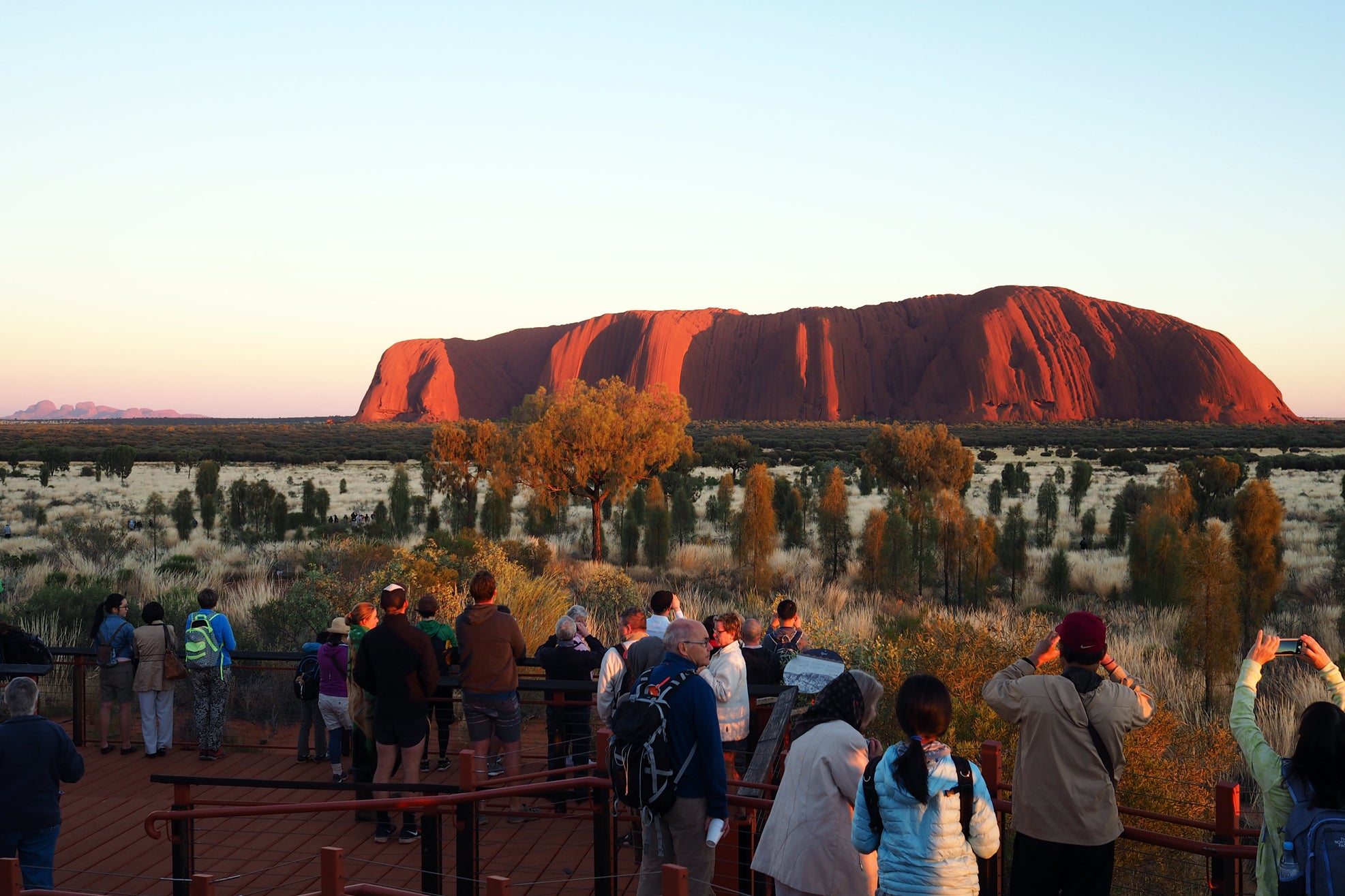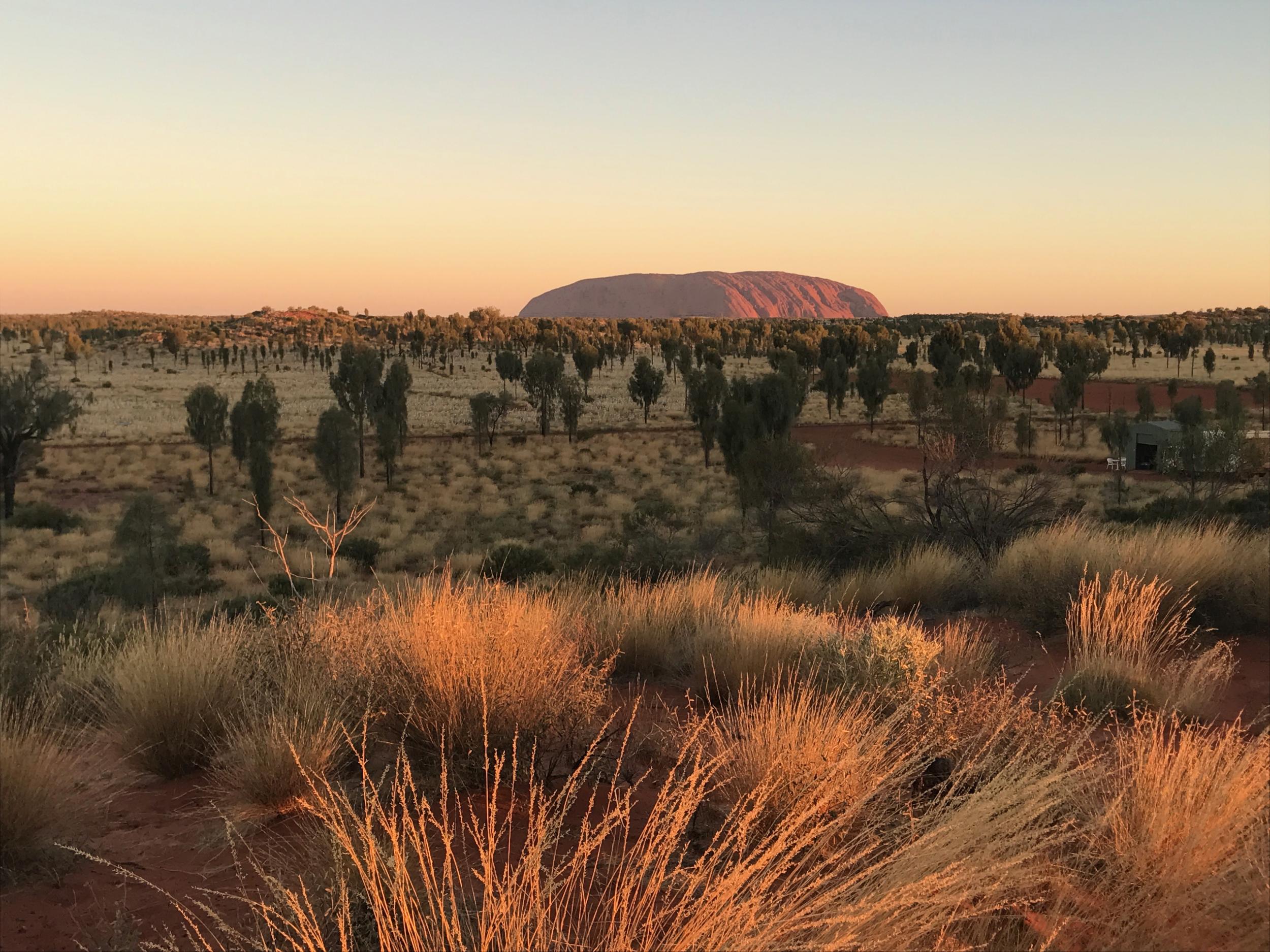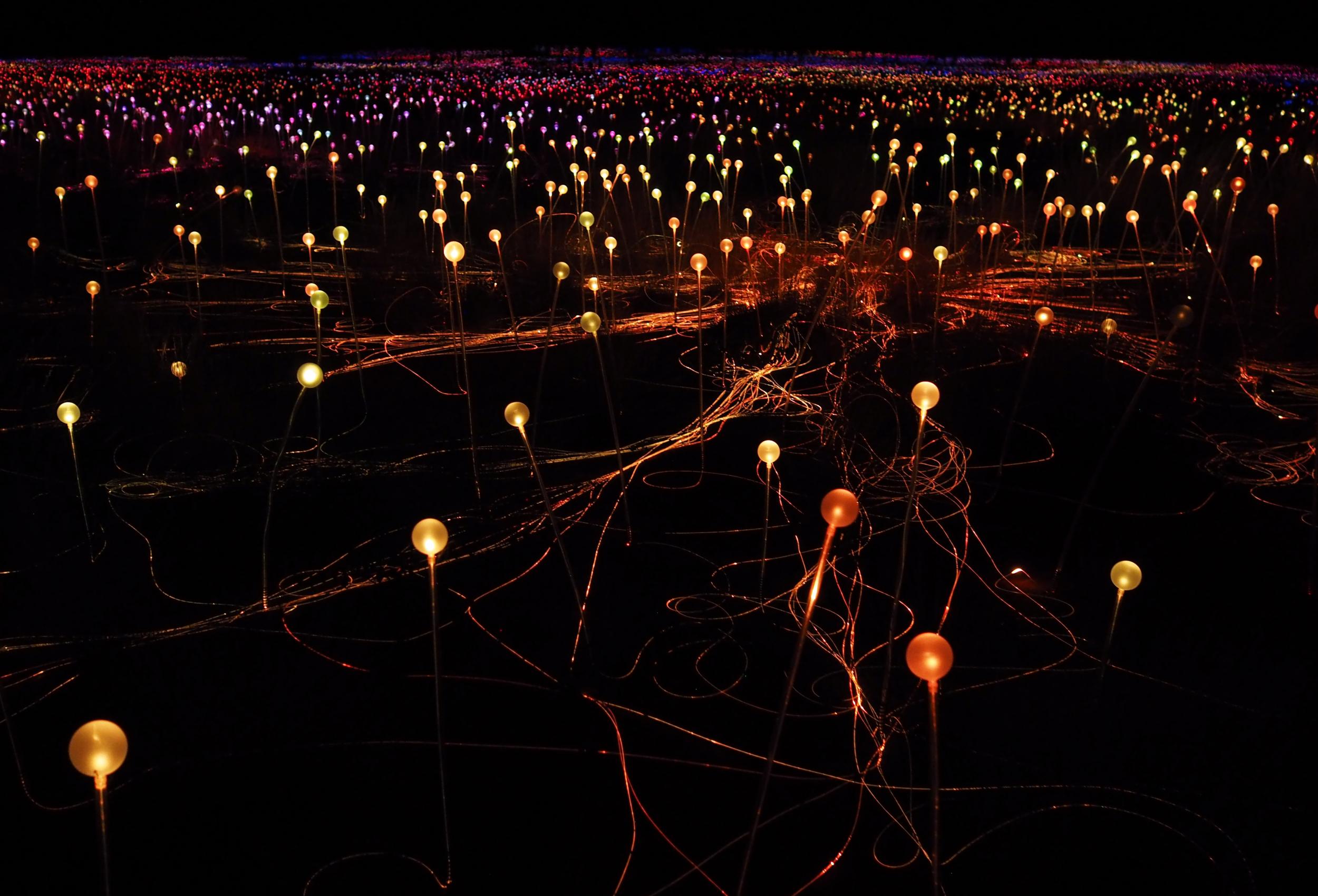Uluru: Why you shouldn’t climb Ayers Rock in Australia
It may be the most famous, but it’s the one hike you should skip in Australia, says Sarah Reid

Your support helps us to tell the story
From reproductive rights to climate change to Big Tech, The Independent is on the ground when the story is developing. Whether it's investigating the financials of Elon Musk's pro-Trump PAC or producing our latest documentary, 'The A Word', which shines a light on the American women fighting for reproductive rights, we know how important it is to parse out the facts from the messaging.
At such a critical moment in US history, we need reporters on the ground. Your donation allows us to keep sending journalists to speak to both sides of the story.
The Independent is trusted by Americans across the entire political spectrum. And unlike many other quality news outlets, we choose not to lock Americans out of our reporting and analysis with paywalls. We believe quality journalism should be available to everyone, paid for by those who can afford it.
Your support makes all the difference.As the first rays of sunlight hit Uluru (Ayers Rock), making Australia’s most famous hunk of sandstone glow a deep scarlet red against the orange-blue sky, the crowd of tourists that has gathered at the sunrise viewpoint lets out a collective coo. It’s a magical – almost spiritual – experience. For me, at least.
“We didn’t come all this bloody way not to climb Ayers Rock,” huffs a young teenage girl behind me.
“It’s a bit windy,” her younger brother protests meekly. “What if we fall off?”
His sister rolls her eyes. She reminds me a bit of myself at that age, having coerced my younger brother into performing all manner of risky stunts alongside me as children. But while scaling Uluru (and buying the T-shirt) was once the key goal for those who made the pilgrimage to Australia’s Red Centre, this is one hike I’m happy to skip.
For one, it’s dangerous – more than 35 people have died climbing the 348-metre monolith since tourism kicked off here in the 1940s, and many more have been rescued at great risk and expense, including three Australian tourists who were retrieved last September after falling into a crevice. It also has an environmental impact, with the soles of climbers’ shoes leaving a path up the rock that is visible for miles. Plastic water bottles get dropped, and climbers with poor bladder control pollute waterholes used by wildlife.
Most importantly, climbing Uluru goes against the wishes of the Anangu people, the traditional owners of Uluru, for whom the rock and the tjukurpa (creation stories) associated with it hold deep spiritual significance. If you weren’t aware of the cultural implications of climbing Uluru before, they are difficult to ignore when you visit, given they are now plastered around Ayers Rock Resort and communicated by rangers and guides who lead tours in Uluru-Kata Tjuta National Park. Even if you miss those hints, it’s impossible to miss the huge signboard at the base of the climb.
“We, the traditional Anangu owners, have this to say,” the sign reads. “Uluru is sacred in our culture, a place of great knowledge. Under our traditional law, climbing is not permitted. This is our home. Please don’t climb.”
Climbing Uluru, however, is perfectly legal, and around 60,000 tourists march right past this sign and up the rock each year. While the climb is often closed due to high winds or extreme heat, most days it remains open.

By 8am on a Tuesday, dozens of people are milling about the car park at the base of the climb. When a ranger arrives to open the climb before leading the excellent free daily Mala Walk around the base, a young Australian family makes the first move towards the black chain (installed in 1964 and extended in 1976) that jags up the northwestern face of the rock like an unsightly black scar.
“I know we shouldn’t but we’re doing it anyway,” the mother from Melbourne tells me when I query her about her motivation for attempting the ascent. “I climbed it when I was younger and I want my kids to be able to have the same experience in case it gets closed,” she says.
Why the climb remains open, and how long it will stay that way, is complicated. Uluru’s land title was handed back to its traditional owners in 1985, but was immediately leased to the Australian federal government to be jointly managed as a national park for 99 years. The current Uluru-Kata Tjuta National Park management plan states that the climb will be “permanently closed when the proportion of visitors climbing falls below 20 per cent”, and with Parks Australia confirming that climber rates have hovered around 20 per cent for the past few years, that day might not be far off. The government could close it earlier, of course, but despite calls to shut it down becoming louder these days, especially following climber incidents, it hasn’t happened.

By 9am I count at least 30 people in various states of ascent, including a group of Korean tourists wearing inappropriate footwear posing for selfies about 50 metres up the face. I can accept that the cultural impact of clambering on the icon might be a little hazy for visitors with limited English skills, but given climbers come from all walks of life, there seems to be only one explanation as to why so many still do it: Indigenous culture is still not taken seriously, in Australia, or abroad. If it was, tourists would show the same unquestioning respect for local culture and customs that they do in other destinations, whether it be removing your hat to enter a church, avoiding certain parts of a temple or mosque if you are a woman or removing your shoes before entering someone’s home. Locals would encourage it, and the government would enforce it.
It’s a reality that Sammy Wilson, grandson of the late Paddy Uluru, who played an instrumental role in the Aboriginal Land Rights movement that kicked off in 1966, is all too familiar with.
“Imagine if our mob went to Asia and started climbing on their temples?” Sammy says as we tuck into a plate of barbecued maku (witchetty grubs) on a cultural tour of Anangu Country. “For us it is the same; Uluru is our sacred place. By climbing it you are disrespecting our culture. Why would you still do it when you know that?”
Some Australians claim that Uluru is for all Australians. But that argument seems a bit weak when you consider that the Anangu had been living here for 22,000 years before Captain Cook first set foot on Australian soil, and Uluru holds no religious significance for piranpa (white people).
And it’s not like there’s nothing else to do out here. Amid the dozens of other activity options on offer, Bruce Munro’s epic Field of Light exhibition was recently extended until the end of March 2018, and several new tours have already been launched this year. The national park’s excellent Cultural Centre, where you can watch Anangu artists at work, is free to visit with your £14.40 park entry ticket, as is taking a stroll around the base of Uluru, where the mysterious tjukurpa come to life.
For most visitors I meet on my visit, that’s enough. Why others would rather snap a selfie on top of Uluru than respect the wishes of its guardians is beyond me. But, for now at least, it’s your choice.
More information
Seit Outback Australia (seitoutbackaustralia.com.au) runs seven-hour guided tours of Uluru for A$280 (£172) per person, including afternoon tea and sunset drinks and appetisers.
Join our commenting forum
Join thought-provoking conversations, follow other Independent readers and see their replies
Comments